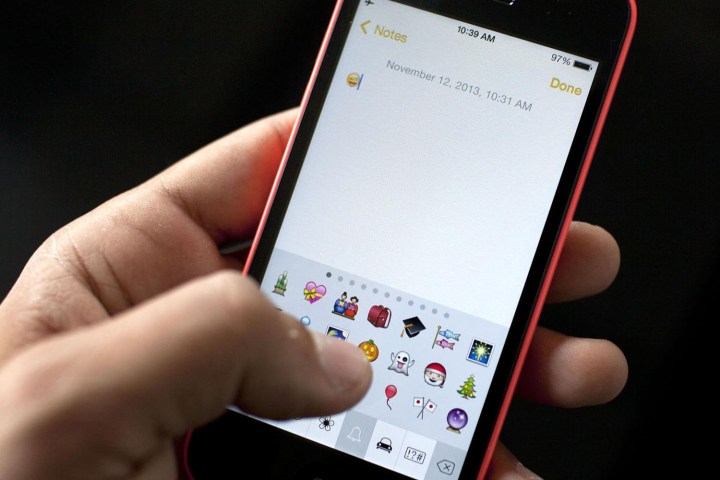
It’ll work sort of like a rebus puzzle. Tweet a hamburger and you’ll get a search for top frankfurter joints. Tweet a palm tree and you’ll receive suggested points of interest and activities. Tweet an Easter Island head and you might get something … different.
“Some [searches] trigger places to eat, others things to see and do, and others highlight lesser-known features,” a Google spokersperson told Digital Trends. “We’re hoping people test it out and see what they find.”
Here’s a sampling of what to expect:
- Sunflower emoji: a search for “flower shops nearby”
- Music note emoji: a search for “concerts nearby”
- Christmas tree emoji: a search for “Christmas trees nearby”
- Umbrella emoji: a search for “will it rain”
- Cow emoji: a search for “cow sound” Easter egg
You’ll receive a tweeted reply in the form of suggested text, an animated GIF showing you how to perform it in Google Search, and a link to the relevant emoji. “Emoji search” isn’t exhaustive — the feature is launching with roughly 200 of the almost 1,400 emoji certified by the Unicode Consortium, the industry body that ensures emojis display consistently across devices — but it’s just the start.
%20(1)%20(1)%5B13769%5D.gif)
“We’re trying to show people some of the great things that search can do, by bringing them to a mobile audience using the language they use ever day — the humble emoji,” a Google spokesperson said. “We thought this would be a great feature to get out ahead of the holidays as people explore new cities and make plans with their families and friends.”
The history of the emoji an exceptionally short one, believe it or not. Pioneered by a Japanese technology company in the late 1990s and adopted by the Unicode Consortium in 2010, the emotive little icons exploded in usage only relatively recently. Now, the world’s approximately 2 billion smartphone users send six billion emoji each day. Fully 92 percent of internet users employ emoji in everyday conversation, one-third of them daily. And on pic-sharing network Instagram, nearly half of all posts contain an emoji of one form or another.
They’ve made the news quite a bit, unsurprisingly. The Oxford Dictionaries named the “face with tears of joy” icon the 2015 Word of the Year. Australia’s foreign affairs minister recently participated in an all-emoji interview. And last year, Finland published a collection of “country-themed emojis,” including images of a Nokia phone from the early 2000s and two people in a sauna.
Google’s attempted to catalog a few of the world’s emojis with AI-driven tools. Smart Smiley, a feature introduced in an update to the company’s Allo messenger app in November, automatically suggests emoticons based on the sentiment of text messages.
“Whether you’re laughing or crying, hungry for a burger or ramen, or planning a night out or a night in, sometimes it’s just easier to say it with an emoji,” Google Group Product Manager Amit Fulay wrote.
To that, we say “thumbs up.”
Editors' Recommendations
- Google just released the first Android 15 beta. Here’s what’s new
- These are the best Android 15 features you need to know about
- Android 15 has two hidden features you’re going to love
- Have a Google Pixel phone? You’re about to get these new features
- Google just announced 8 big Android updates. Here’s what’s new

